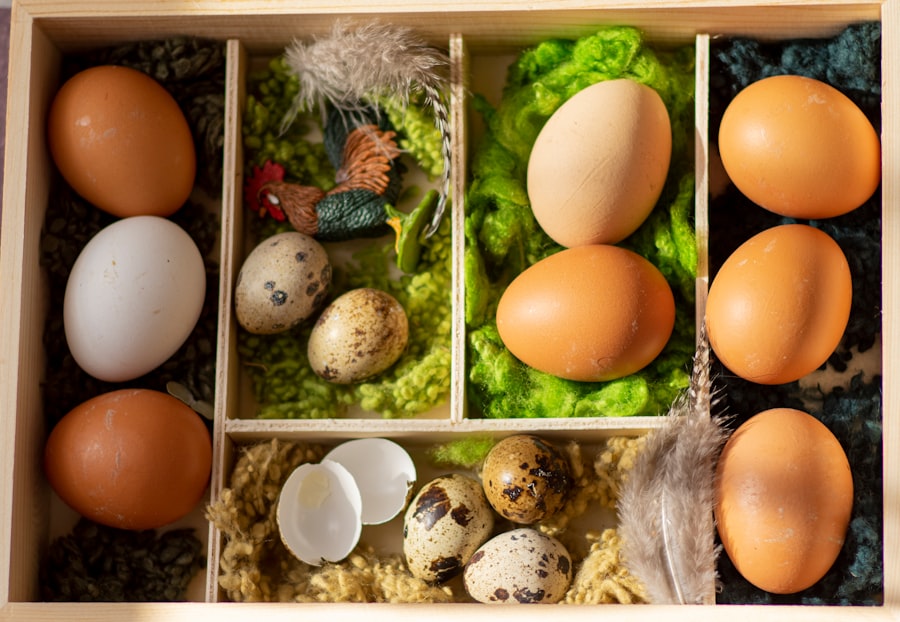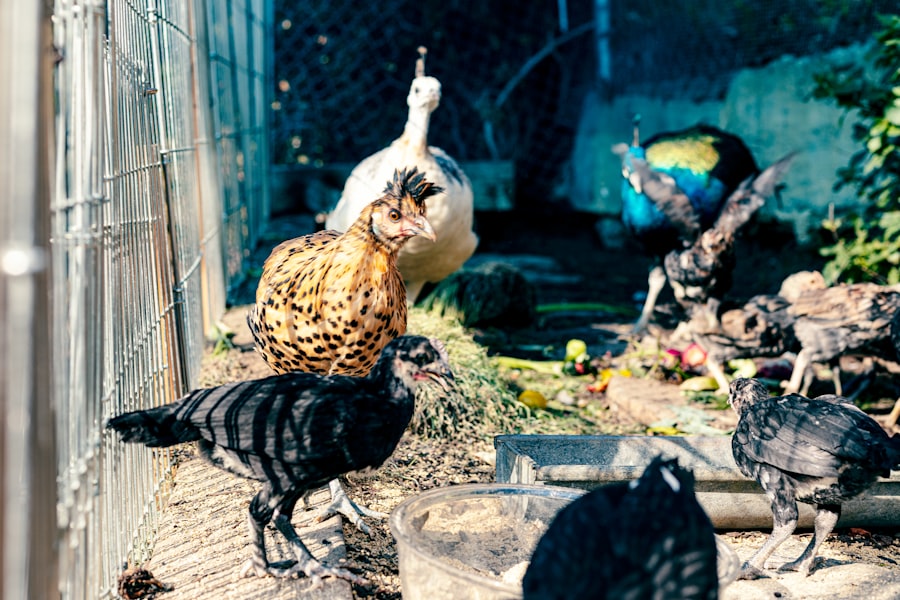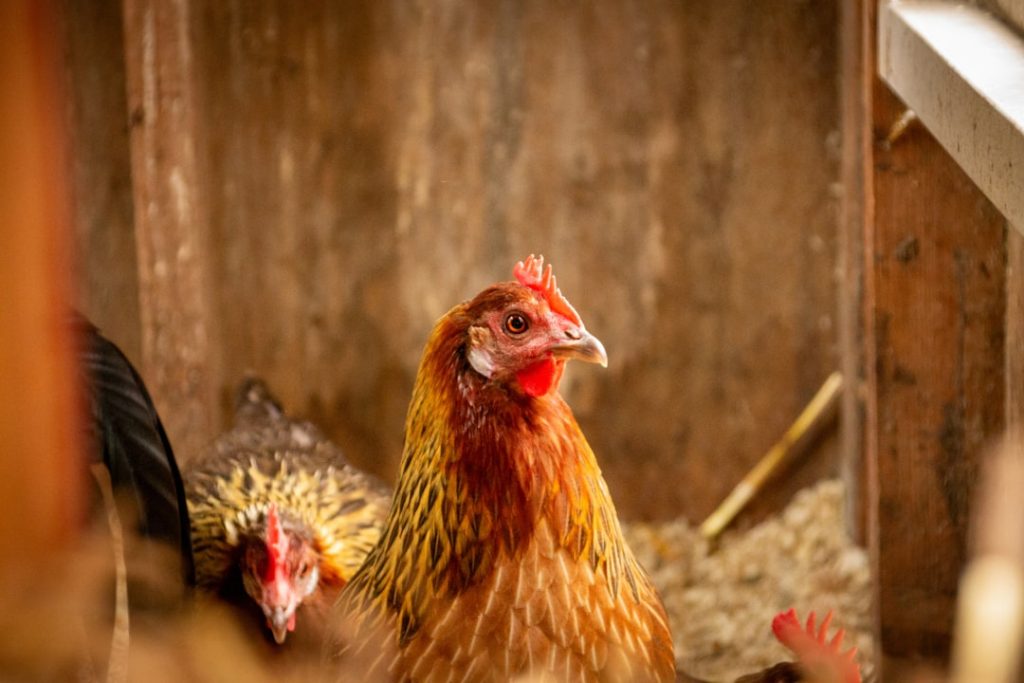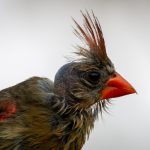Backyard chicken keeping has gained popularity in recent years as individuals seek greater self-sufficiency and sustainability. This practice, however, requires careful attention to the safety and well-being of the flock. Key considerations include securing the coop and run, preventing predator attacks, and maintaining the chickens’ health.
Ensuring backyard chicken safety begins with the proper design and construction of their living space. This involves using durable materials, implementing effective predator-proofing measures, and providing sufficient space for the chickens to move freely. Maintaining the flock’s health is equally important, encompassing proper nutrition, hydration, and environmental management.
Additionally, chicken keepers should be prepared for emergencies by developing a comprehensive first aid plan. This preparation allows for prompt response to unexpected issues that may arise. By addressing these factors, backyard chicken enthusiasts can create a secure and nurturing environment for their flock to flourish.
Table of Contents
- 1 Secure Coop and Run Design
- 2 Predation Prevention Measures
- 3 Health and Wellness Practices
- 4 Safe Feeding and Watering
- 5 Environmental Considerations
- 6 Emergency Preparedness and First Aid
- 7 FAQs
- 7.1 What are some common predators of backyard chickens?
- 7.2 How can I keep my backyard chickens safe from predators?
- 7.3 Are there any specific breeds of chickens that are more predator-resistant?
- 7.4 What are some signs that my backyard chickens may be under threat from predators?
- 7.5 Can I use chemical deterrents to keep predators away from my backyard chickens?
Key Takeaways
- Backyard chicken safety is important for both the chickens and their owners to prevent illness and injury.
- A secure coop and run design is essential to protect chickens from predators and provide a safe environment for them to roam.
- Predation prevention measures such as installing fencing and using motion-activated lights can help keep chickens safe from predators.
- Health and wellness practices including regular check-ups and vaccinations are crucial for maintaining the well-being of backyard chickens.
- Safe feeding and watering practices, such as using clean containers and providing balanced nutrition, are important for the health of backyard chickens.
Secure Coop and Run Design
Coop Design and Ventilation
When it comes to the coop, it’s important to use sturdy materials that can withstand the elements and potential predators. Additionally, the coop should be well-ventilated to prevent the buildup of moisture and ammonia, which can lead to respiratory issues in chickens.
Coop Space and Accessibility
The coop should also provide enough space for your flock to roost comfortably and lay eggs, as well as easy access for cleaning and maintenance.
Run Design and Predator Protection
In addition to the coop, the run should also be carefully designed to prevent predators from gaining access to your chickens. This includes using hardware cloth with small openings to prevent predators from reaching through and grabbing your chickens, as well as burying the wire at least a foot deep to prevent digging predators from gaining access. Additionally, covering the top of the run with wire or netting can prevent aerial predators from swooping in and attacking your flock.
By carefully designing and securing the coop and run, you can create a safe and protected environment for your backyard chickens to thrive.
Predation Prevention Measures

Predators pose a significant threat to the safety of backyard chickens, so it’s important to implement effective predation prevention measures to protect your flock. One of the most important steps you can take is to secure the perimeter of the coop and run with sturdy fencing and hardware cloth. This will help prevent predators from gaining access to your chickens and keep them safe from potential harm.
In addition to securing the perimeter, it’s also important to consider other potential entry points for predators, such as windows, doors, and vents. These areas should be reinforced with hardware cloth or other predator-proof materials to prevent unwanted access. It’s also important to regularly inspect the coop and run for any signs of wear or damage that could potentially compromise their security.
Finally, it’s important to consider the potential threats posed by both ground-based and aerial predators. This may include installing predator-proof latches on doors and windows, using motion-activated lights or sound deterrents, and covering the top of the run with wire or netting to prevent aerial attacks. By implementing these predation prevention measures, you can help ensure the safety and security of your backyard chickens.
Health and Wellness Practices
Maintaining the health and wellness of your backyard chickens is essential for their overall safety and well-being. This includes providing a balanced diet, clean water, and a clean living environment. A balanced diet for chickens should include a mix of high-quality feed, fresh fruits and vegetables, and access to grit for digestion.
Additionally, providing clean water at all times is crucial for preventing dehydration and maintaining overall health. In addition to diet and hydration, it’s important to keep a clean living environment for your chickens. This includes regularly cleaning the coop and run, removing soiled bedding, and providing adequate ventilation to prevent the buildup of moisture and ammonia.
Regularly inspecting your flock for signs of illness or injury is also important for maintaining their health and wellness. Finally, it’s important to provide opportunities for exercise and mental stimulation for your chickens. This may include providing perches for roosting, dust bathing areas, and access to outdoor space for foraging.
By maintaining their health and wellness through proper diet, hydration, cleanliness, and mental stimulation, you can help ensure the safety and well-being of your backyard chickens.
Safe Feeding and Watering
Providing safe feeding and watering options for your backyard chickens is essential for their overall safety and well-being. When it comes to feeding, it’s important to provide a balanced diet that meets their nutritional needs. This may include a mix of high-quality feed, fresh fruits and vegetables, and access to grit for digestion.
Additionally, it’s important to provide feeding options that are free from potential contaminants or toxins that could harm your flock. In addition to feeding, providing clean water at all times is crucial for preventing dehydration and maintaining overall health. This includes regularly cleaning waterers to prevent the buildup of bacteria or algae that could potentially harm your chickens.
Additionally, it’s important to provide multiple watering options throughout the coop and run to ensure that all of your chickens have access to clean water at all times. Finally, it’s important to monitor your flock’s feeding and watering habits regularly to ensure that they are getting enough nutrition and hydration. This may include observing their behavior at feeding time, checking water levels throughout the day, and regularly inspecting their overall health and well-being.
By providing safe feeding and watering options for your backyard chickens, you can help ensure their safety and overall well-being.
Environmental Considerations

Ventilation and Space: The Foundation of a Healthy Environment
Providing a safe and comfortable environment for your backyard chickens is crucial for their overall well-being. This includes ensuring adequate ventilation in the coop to prevent the buildup of moisture and ammonia, which can lead to respiratory issues in chickens. Additionally, it’s essential to provide sufficient space for your flock to roam in both the coop and run, as overcrowding can lead to stress and potential health issues.
Weathering the Elements: Protecting Your Flock from the Outside
In addition to ventilation and space, it’s vital to consider the impact of weather on your flock’s safety. This includes providing shade in hot weather, shelter from wind and rain, and insulation in cold weather. Regular inspections of the coop and run are also necessary to identify any signs of wear or damage that could compromise their ability to provide a safe environment for your flock.
Environmental Hazards: Identifying and Mitigating Risks
Finally, it’s essential to consider potential environmental hazards that could pose a threat to your flock’s safety. This includes toxic plants in their outdoor space, potential contaminants in their food or water sources, or other hazards in their living environment. By carefully considering these environmental factors and taking steps to mitigate potential risks, you can create a safe and comfortable environment for your backyard chickens.
Emergency Preparedness and First Aid
Being prepared for emergencies is essential for ensuring the safety of your backyard chickens. This includes having a solid first aid plan in place for addressing any unexpected issues that may arise. One of the first steps in emergency preparedness is having a well-stocked first aid kit on hand that includes supplies such as bandages, antiseptic ointment, scissors, tweezers, gloves, heat packs, electrolytes, and other essential items.
In addition to having a first aid kit on hand, it’s important to have a solid understanding of common chicken health issues and how to address them effectively. This may include knowing how to identify signs of illness or injury in your flock, as well as how to administer basic first aid treatments such as cleaning wounds or administering medication. Finally, it’s important to have a plan in place for addressing larger-scale emergencies such as natural disasters or predator attacks.
This may include having a secure location where you can temporarily house your flock during an emergency, as well as having a plan for quickly securing the coop and run in the event of an unexpected threat. By being prepared for emergencies and having a solid first aid plan in place, you can help ensure the safety and well-being of your backyard chickens in any situation. In conclusion, ensuring the safety of your backyard chickens requires careful consideration of several important factors including securing the coop and run design, implementing predation prevention measures, maintaining health and wellness practices, providing safe feeding and watering options, considering environmental factors, as well as being prepared for emergencies with a solid first aid plan in place.
By taking these factors into consideration and implementing effective safety measures, you can create a safe and secure environment for your backyard chickens to thrive.
If you’re interested in keeping backyard chickens safe, you may also want to learn about when guinea fowl lay eggs. Check out this article to learn more about the breeding habits of guinea fowl and how to keep them safe and healthy.
FAQs
What are some common predators of backyard chickens?
Some common predators of backyard chickens include raccoons, foxes, coyotes, dogs, cats, hawks, owls, and snakes.
How can I keep my backyard chickens safe from predators?
You can keep your backyard chickens safe from predators by securing their coop with sturdy fencing, using predator-proof latches on doors and windows, installing motion-activated lights or alarms, and keeping the area around the coop free of tall grass and brush.
Are there any specific breeds of chickens that are more predator-resistant?
Some breeds of chickens, such as the Brahma, Jersey Giant, and Australorp, are known to be more predator-resistant due to their larger size and assertive nature.
What are some signs that my backyard chickens may be under threat from predators?
Some signs that your backyard chickens may be under threat from predators include missing eggs, feathers, or chickens, unusual behavior such as excessive squawking or hiding, and evidence of digging or scratching around the coop.
Can I use chemical deterrents to keep predators away from my backyard chickens?
It is not recommended to use chemical deterrents to keep predators away from your backyard chickens, as these can be harmful to the chickens and the environment. It is best to use physical barriers and other non-toxic methods to protect your chickens.
Meet Walter, the feathered-friend fanatic of Florida! Nestled in the sunshine state, Walter struts through life with his feathered companions, clucking his way to happiness. With a coop that’s fancier than a five-star hotel, he’s the Don Juan of the chicken world. When he’s not teaching his hens to do the cha-cha, you’ll find him in a heated debate with his prized rooster, Sir Clucks-a-Lot. Walter’s poultry passion is no yolk; he’s the sunny-side-up guy you never knew you needed in your flock of friends!








